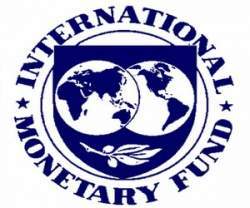International financial organizations or institutions
When we think about
the economic dimension of globalization, the first thing that comes to our mind
are concepts such as multinationals, free trade agreements, capitalism and
foreign exchange.
We can, however, mention
that according to García, globalization, from the economic impact, tries to
achieve an efficient use of scarce resources at a global level, raising the
price / cost ratio as one of the most upcoming references in the search of the
corresponding economies of scale. But beyond the systems of economies of scale,
globalization seeks to strengthen a dynamics of change, so that it can reduce
unit costs in highly significant quantities through the widespread use of
available resources, whatever their location. It is therefore not a
"delocalisation" of activities but rather a new integration, a new
way of organizing the resources available in the most diverse locations. (p.07)
The most recognized
organizations and / or international financial institutions that are related to
the economy and its development are for example the International Monetary Fund
(IMF), World Bank (WB) World Trade Organization (WTO).
The
International Monetary Fund
The International Monetary
Fund, or IMF, promotes international financial stability and monetary
cooperation. It also facilitates international trade, promotes employment and
sustainable economic growth, and helps to reduce global poverty. The IMF is
governed by and accountable to its 189 member countries.
 |
| The International Monetary Fund emblem (IMF) |
The IMF's primary mission is
to ensure the stability of the international monetary system—the system of
exchange rates and international payments that enables countries and their
citizens to transact with each other. In order to maintain
stability and prevent crises in the international monetary system, the IMF
monitors member country policies as well as national, regional, and global
economic and financial developments through a formal system known as
surveillance. The IMF provides advice to member countries and promotes policies
designed to foster economic stability, reduce vulnerability to economic and
financial crises, and raise living standards.
The IMF also providing loans
to member countries that are experiencing actual or potential
balance-of-payments problems is a core responsibility of the IMF. Individual
country adjustment programs are designed in close cooperation with the IMF and
are supported by IMF financing, and ongoing financial support is dependent on
effective implementation of these adjustments.
Primary aims:
- Promote international monetary cooperation;
- Facilitate the expansion and balanced growth of international trade;
- Promote exchange stability;
- Assist in the establishment of a multilateral system of payments; and
- Make resources available (with adequate safeguards) to members experiencing balance-of-payments difficulties.
World
Bank Group
The International Bank for
Reconstruction and Development (IBRD) is a global development cooperative owned
by 189 member countries. As the largest development bank in the world, it
supports the World Bank Group’s mission by providing loans, guarantees, risk
management products, and advisory services to middle-income and creditworthy
low-income countries, as well as by coordinating responses to regional and
global challenges.
With 189 member countries,
staff from more 170 countries, and offices in over 130 locations, the World
Bank Group is a unique global partnership: five institutions working for
sustainable solutions that reduce poverty and build shared prosperity in
developing countries.
 |
| Institutions in the World Bank Group |
The bank provide low-interest loans,
zero to low-interest credits, and grants to developing countries. These support
a wide array of investments in such areas as education, health, public
administration, infrastructure, financial and private sector development,
agriculture, and environmental and natural resource management. Some of our
projects are cofinanced with governments, other multilateral institutions,
commercial banks, export credit agencies, and private sector investors.
The bank also provide or
facilitate financing through trust fund partnerships with bilateral and
multilateral donors. Many partners have asked the Bank to help manage
initiatives that address needs across a wide range of sectors and developing
regions.
offer support to developing
countries through policy advice, research and analysis, and technical
assistance. Our analytical work often underpins World Bank financing and helps
inform developing countries’ own investments.
The
WTO
 |
| The World Trade Organization emblem (WTO) |
The World Trade Organization
(WTO) is the only global international organization dealing with the rules of
trade between nations. At its heart are the WTO agreements, negotiated and
signed by the bulk of the world’s trading nations and ratified in their
parliaments. The goal is to ensure that trade flows as smoothly, predictably
and freely as possible.
Stand for a number of
simple, fundamental principles form the foundation of the multilateral trading
system.
At its heart are the WTO
agreements, negotiated and signed by the bulk of the world’s trading nations.
These documents provide the legal ground rules for international commerce. They
are essentially contracts, binding governments to keep their trade policies
within agreed limits.
The system’s overriding
purpose is to help trade flow as freely as possible — so long as there are no
undesirable side effects — because this is important for economic development
and well-being. That partly means removing obstacles. It also means ensuring
that individuals, companies and governments know what the trade rules are
around the world, and giving them the confidence that there will be no sudden
changes of policy. In other words, the rules have to be ‘transparent’ and
predictable.
Trade relations often
involve conflicting interests. Agreements, including those painstakingly
negotiated in the WTO system, often need interpreting. The most harmonious way
to settle these differences is through some neutral procedure based on an
agreed legal foundation. That is the purpose behind the dispute settlement
process written into the WTO agreements.
Comments
Post a Comment